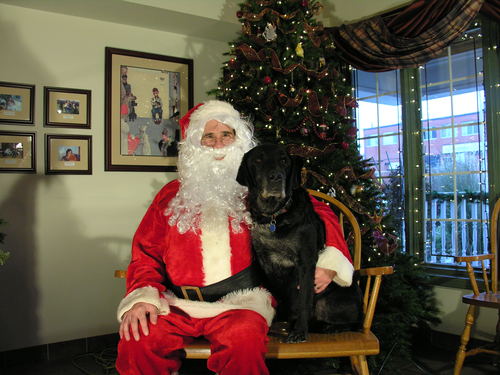
Christmas Caution
The children are nestled all snug in their beds, all bellies are full, the last of the guests have headed home and the crackling fire tempts you to finally put your feet up…but then you hear that unmistakable sound… Shadow is vomiting in the laundry room.
With all the chaos and novelty around the Christmas holiday season many pets find themselves ample opportunity to explore new objects and taste-test new goodies. Unfortunately, this often results in many pets becoming ill, some seriously, keeping us veterinarians hoping through December. Here are some helpful hints to keep you in front of the crackling fire and out of the veterinary hospital this Christmas!
- Tempting but toxic: Seasonal plants such as Poinsettias, Holly Berries, mistletoe and Ivy can all make pets sick if they are chewed on or ingested so best to choose the imitation varieties.
- Beautiful Ambience but fire hazard: Candles are a popular addition to seasonal decorations, but they are often an irresistible temptation to cats, or the victim of a wagging dog tail.
- Timber! If you have a young cat and enjoy a Christmas Tree, be sure to anchor the tree to the wall, window frame or curtain rod. Young cats assume that Christmas trees are their personal play grounds.
- Chocolate for People not pets: Most people are aware that chocolate can be toxic to our pets, but every Christmas dogs manage to sniff out what we don’t notice. Common mistakes include guests bringing wrapped gifts that contain chocolate or boxes left on low tables that suddenly become unsupervised. Bakers chocolate and dark chocolate are even more toxic than milk chocolate.
- Pretty on the outside, dangerous on the inside! Cats find stringy, wiggly things irresistible, and Christmas presents an abundance of these items; tinsel, elastic bands, gift ribbon, string and threads etc. Cats start by playing with these items, but just one lick can result the item getting caught on the small barbs of a cat’s tongue. Unable to spit the string out, the cat continues to swallow until its all gone. Less than 12 inches of string/ribbon can result in knotting of the intestines that requires life saving surgery.
- What’s Xylitol? Xylitol is a sugar alcohol used as a sweetener in many gums and candy. Xylitol can be quite toxic when ingested by our pets so be on the look out for it this season.
- What’s in the Stocking? Christmas is often a time when dogs and cats are given special treats as gifts. However the digestive tract of pets becomes accustomed to their regular food and treats. Bones, rawhides and other consumable treats may cause diarrhea, vomiting or worse in pets not usually receiving these items. It is best to give toys, not edible treats to our pets for Christmas.
- A “Bone” of contention: Although some dogs seemingly do fine when given bones to chew on, many are not so lucky. The marrow inside bones is a frequent cause of GI upset and pancreatitis. Bones are choking hazards, they can splinter and perforate the wall of the stomach, they can cause obstructions and get stuck in the mouth or around the jaw.
- Turkey in the bowl: Many well-meaning, guilt-ridden pet owners want to share on Christmas Day. But the fat levels in turkey, gravy, trimmings frequently cause the Emergency waiting room to be full of pets with vomiting and diarrhea on Boxing Day. Not you, not this year!
- On a final note, as the temperature drops, please remember that there are very few breeds of dogs that have a coat sufficiently thick to keep them warm in Canadian winters. When temperatures drop below -5C our dogs should be brought inside when they are not exercising. And should not be left outside overnight. Even Husky dogs – if they spend some of their time indoors, their coat does not thicken sufficiently to keep them warm when trying to sleep in our cold temperatures.
Merry Christmas and a Happy (and Healthy) New Year!
